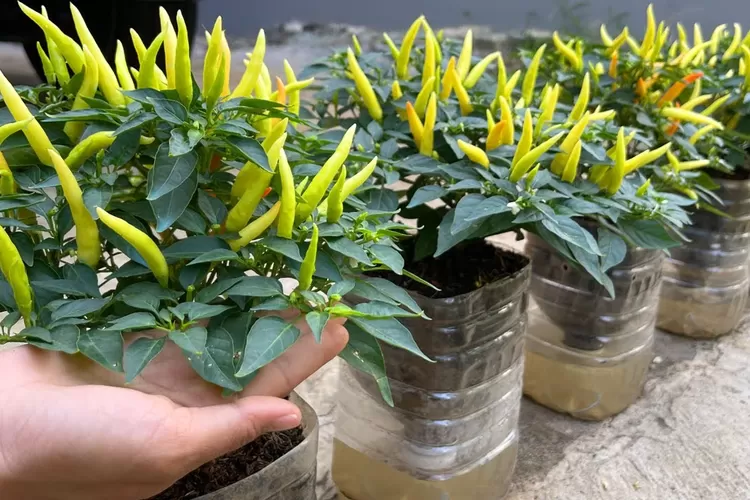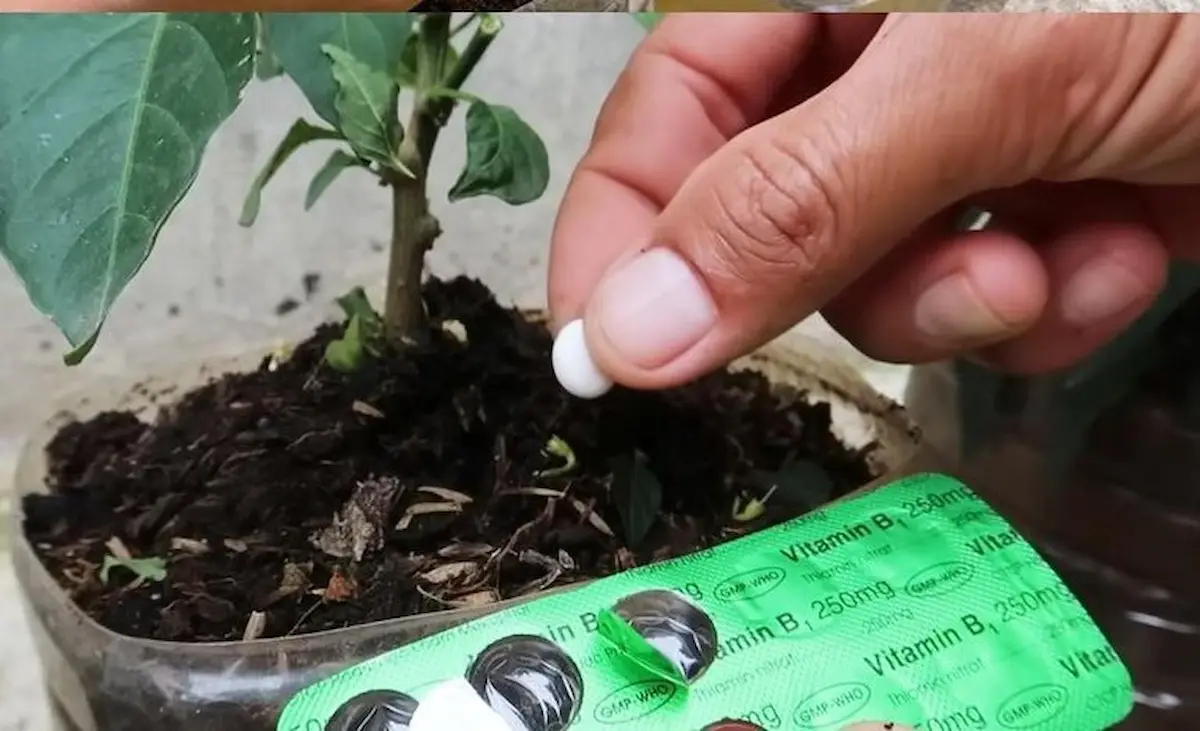Introduction
Growing chili peppers at home is a delightful way to add spice to your gardening experience and your kitchen. Whether you’re a seasoned gardener or a beginner, container gardening offers a practical and rewarding approach to growing these vibrant, flavorful plants. In this comprehensive guide, you’ll learn everything you need—from selecting the right container and soil preparation to seed sowing, plant care, and harvesting. Plus, discover an unconventional yet promising method to boost your chili plants’ health using vitamin B complex supplements.
Part 1: Preparing for Success – Container Selection and Soil Preparation
Choosing the Right Container
A healthy chili pepper plant starts with a suitable container. When selecting your pot, keep these points in mind:
- Size Matters: Choose a container with at least 5 gallons capacity to provide ample room for root development.
- Material Choice: Plastic or glazed ceramic pots retain moisture more effectively than unglazed clay, which can dry out faster.
- Drainage is Key: Ensure your pot has sufficient drainage holes to prevent waterlogging, which can cause root rot.
Preparing the Soil
Chili peppers thrive best in well-draining, fertile soil. To set the stage for robust growth:
- Potting Mix: Use a high-quality potting soil formulated for vegetables.
- Amend with Compost: Enrich the soil by mixing in organic compost, which boosts fertility and improves soil structure.
- Ideal pH Range: Maintain a slightly acidic to neutral soil pH between 6.0 and 7.0 for optimal nutrient uptake.
Part 2: Planting and Care – From Seed to Harvest
Starting Seeds Indoors
Begin your chili pepper journey by sowing seeds indoors 8 to 10 weeks before the last expected frost date:
- Planting Depth: Sow seeds about ¼ inch deep in seed trays or small pots.
- Warm Environment: Maintain soil temperatures between 70–85°F (21–29°C) to encourage quick germination.
- Lighting: Provide 12–16 hours of bright light daily, using grow lights if natural light is insufficient.
Transplanting Seedlings Outdoors
Once seedlings develop two or more sets of true leaves and the outdoor temperature remains above 60°F (16°C), it’s time to transplant:
- Hardening Off: Gradually expose plants to outdoor conditions over 7 days to prevent shock.
- Spacing: Plant chili peppers 12 to 18 inches apart in their containers to ensure good air circulation and growth space.
Ongoing Plant Care
- Watering: Keep soil consistently moist but avoid overwatering. Water deeply when the top inch of soil dries out.
- Fertilizing: Apply a balanced, water-soluble fertilizer every 2 to 3 weeks during the growing season to provide essential nutrients.
- Pruning: Regularly remove dead or yellowing leaves to improve airflow and reduce disease risk.
Supporting Your Plants
As chili peppers grow, they might need structural support:
- Use Stakes or Cages: Support taller or heavily fruiting plants with stakes or cages to prevent breakage.
- Mulching: Apply organic mulch around the base to conserve moisture and suppress weeds.

Part 3: Enhancing Growth with Vitamin B Complex
What Does Vitamin B Complex Do for Plants?
Vitamin B complex, especially thiamine (B1), is involved in plant metabolism and stress resilience. Though scientific studies are still evolving, many gardeners have reported improved plant vitality and fruiting when using vitamin B supplements.
How to Apply Vitamin B Complex
- Soil Drench: Dissolve a vitamin B complex tablet in water according to instructions and water the base of the plant.
- Foliar Spray: Dilute the solution further and spray leaves during cooler times of the day to avoid leaf burn.
Important Considerations
- Dilution: Always use a diluted solution to avoid toxicity.
- Frequency: Apply sparingly; overuse may cause nutrient imbalances.
- Consultation: Check latest research or consult gardening experts before regular use.
Part 4: Troubleshooting Common Issues
Pests and Diseases
- Aphids: Manage infestations using insecticidal soaps or neem oil sprays.
- Blossom End Rot: Prevent by maintaining consistent watering and ensuring adequate calcium in soil.
- Powdery Mildew: Improve air circulation and promptly remove infected leaves.
Environmental Challenges
- Heat Stress: Provide shade during peak sun hours to protect plants.
- Cold Spells: Use row covers or temporarily bring containers indoors during unexpected cold snaps.
Part 5: Harvesting and Culinary Uses
When to Harvest
- Color Change: Harvest peppers once they attain their mature color, which varies by variety.
- Firmness: The peppers should feel firm and plump.
How to Harvest
- Use sharp scissors or pruning shears to snip peppers off the plant, leaving a small stem attached to reduce damage.
Enjoying Your Harvest
- Fresh Use: Add to salads, salsas, and sandwiches for fresh heat.
- Preserving: Dry or pickle to extend shelf life.
- Infusions: Make chili-infused oils or vinegars for unique flavor additions.
Tools and Materials Checklist
- 🪴 5-gallon container pots with drainage holes
- 🌱 High-quality vegetable potting mix
- 🌿 Organic compost
- 💧 Balanced, water-soluble fertilizer
- 💊 Vitamin B complex tablets (optional)
- ✂️ Pruning shears and watering can
- 🪢 Stakes or tomato cages
- 🌞 Grow lights (if growing indoors)
- 🛡️ Row covers or shade cloth
FAQs
Q1: Can I grow chili peppers indoors year-round?
Yes, with adequate light and temperature control, chili peppers can thrive indoors throughout the year.
Q2: How often should I water chili peppers in containers?
Water when the top inch of soil feels dry, keeping soil moist but not waterlogged.
Q3: Which chili pepper varieties are best for container gardening?
Compact varieties like Jalapeño, Thai Hot, and Cayenne perform well in pots.
Q4: Is vitamin B complex safe for all plants?
While generally safe in diluted form, always research and test on a small scale before widespread application.
Q5: How can I preserve chili peppers after harvest?
Drying, pickling, and freezing are effective methods for long-term storage.
Conclusion
Cultivating chili peppers in containers is both an enjoyable hobby and a practical way to supply your kitchen with fresh, flavorful heat. By carefully selecting containers, preparing nutrient-rich soil, and maintaining consistent care, you set your plants up for success. Exploring the use of vitamin B complex as a growth enhancer is an exciting option but should be approached with care and research. Share your gardening adventures and results with the community to inspire others on this spicy journey!
Link: https://www.gardeningknowhow.com/edible/vegetables/pepper/growing-peppers-in-containers.htm
Anchor text: growing peppers in containers
Link: https://www.thespruce.com/how-to-grow-jalapeno-peppers-1902569
Anchor text: how to grow jalapeño peppers
Link: https://www.gardeners.com/how-to/growing-peppers/5061.html
Anchor text: pepper plant care and maintenance


My brother recommended I may like this website.
He was once entirely right. This submit actually made my day.
You cann’t consider just how much time I had spent for this info!
Thank you!
here coinbase login
кракен тор – kra33 at, kra33
he said coinbsae wallet login
why not try here coinbase login
Kra33.at – kra at, kra33 cc
SEO Pyramid 10000 Backlinks
Inbound links of your site on forums, sections, comments.
Backlinks – three steps
Step 1 – Standard external links.
Phase 2 – Links via 301 redirects from highly reliable sites with PageRank PR 9–10, for example –
Phase 3 – Adding to backlink checkers –
The key benefit of analyzer sites is that they show the Google search engine a site map, which is essential!
Explanation for Stage 3 – only the main page of the site is added to SEO checkers, internal pages cannot be included.
I complete all phases sequentially, resulting in 10 to 30 thousand backlinks from the full process.
This linking tactic is the best approach.
Demonstration of submission on SEO platforms via a TXT file.
hardware tools for DIY
Univerzell.com is your hub for workshop hand tools, professional power tools, and hardware tools for DIY. Buy power tools online, seize limited power tool deals, and discover DIY woodworking project tools. Finish strong with our durable tool storage solutions—gear up today.
https://t.me/s/Official_1win_kanal/1421